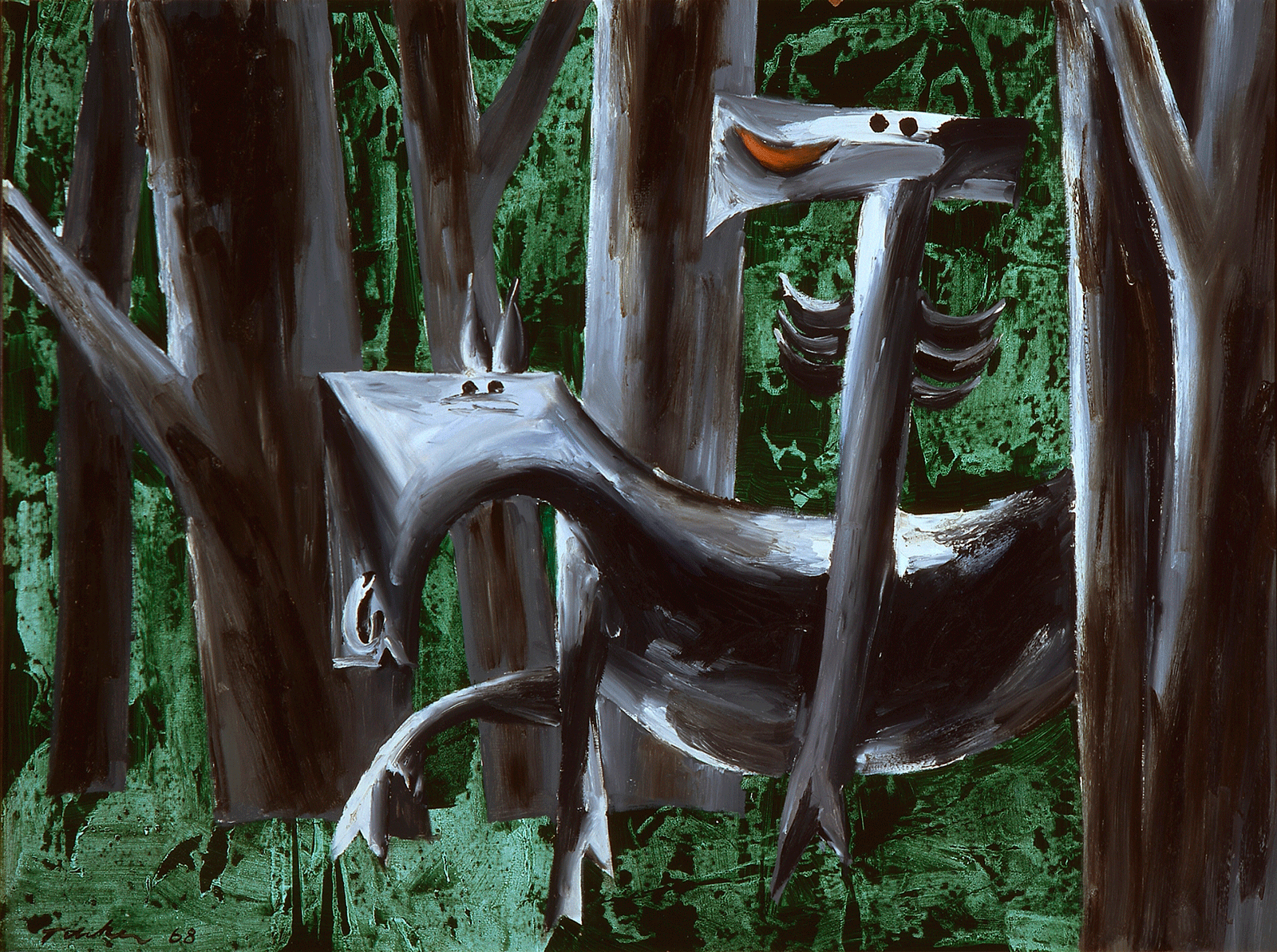PAN IN ARMOURALBERT TUCKER'S BUSHRANGERS
Free with Museum Pass
Free entry
In 1957, after ten years living overseas and submitting to a certain nostalgia for Australia, Albert Tucker exhibited a series of paintings based on the story of the notorious bushranger, Ned Kelly. Tucker’s interest in Australian myth, and by extension Australian identity, had sharpened during his time in Europe: ‘there is a continuous feeling of alienation when you’re not living in the country you were born in, when you’re away from your true sources of energy’, he said in 1969.
Though initially intended as a good-humoured parody of his friend Sidney Nolan’s famous series, in which Nolan cast Kelly as a folkloric hero, Tucker’s reading of the Kelly episode would take on an entirely different form. He saw Ned as an outsider and rebel, proposing him as a ‘revolutionary in an aborted revolution’. Tucker drew on the lessons of European modernism, ancient Etruscan motifs and the legends of Pan in Arcadia in developing his theme.In this way he could place the bushranger in a world history, mythologising and classicising the Kelly story, and link the ancient in Europe to the ancientness of the Australian desert. Two series of paintings were the result: one satiric, imaginative, and steeped in the emblems of the ancient world; the second tragic, monumental, and informed by the well-known photographic evidence of the Kelly episode.
Over time the theme of bushrangers became part of Tucker’s stock of Australian cultural images, and included both historical and fictional characters. Most notable are those based on the story of Jack Doolan—the Bendigo bushranger dubbed the Wild Colonial Boy—completed in the years after Tucker’s return to Australia in 1960. Not coincidently, the Australian folksong ‘The Wild Colonial Boy’ was sung for the Kelly Gang at Glenrowan in June 1880, its earliest documented performance.
